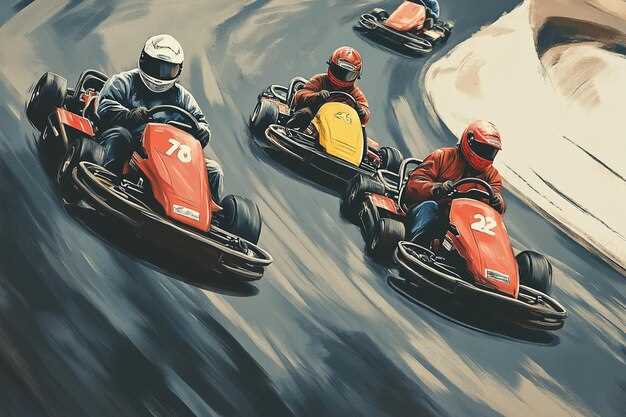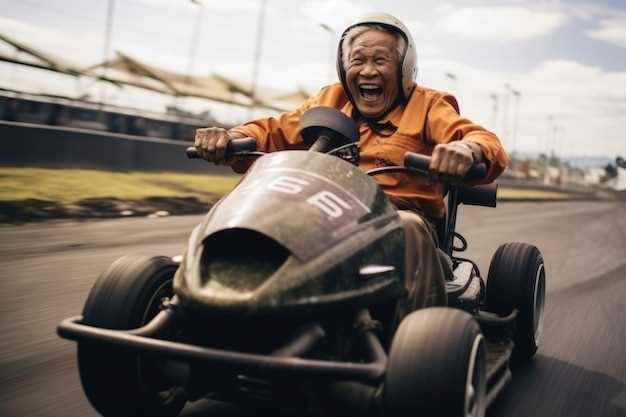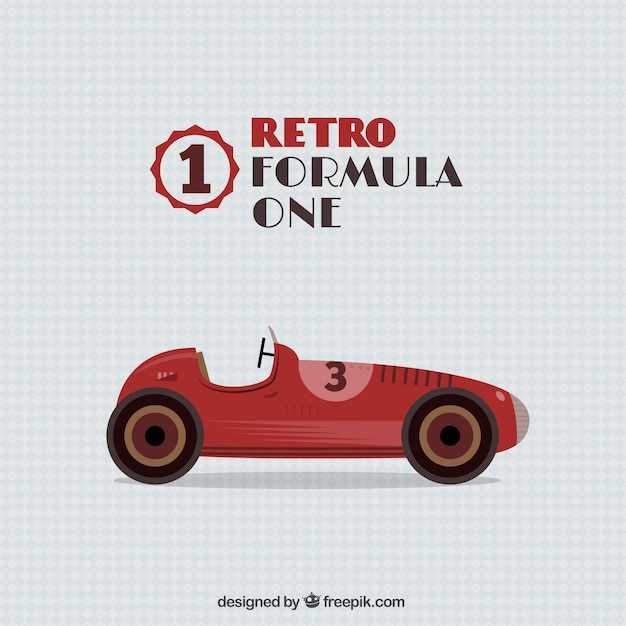
The world of motorsports has undergone a remarkable evolution over the decades, with various influences shaping its current landscape. Among these, vintage racing holds a special place as it not only celebrates the heritage of automotive engineering but also impacts contemporary racing dynamics. By examining the intricate relationship between vintage racing and modern competitions, one can discern how historical practices and innovations continue to inform today’s race formats and vehicle design.
Vintage racing serves as a poignant reminder of the origins of motorsport, showcasing classic vehicles that once dominated the tracks. These races are not merely a nostalgic pilgrimage but also a laboratory for experimentation and learning, offering valuable insights that modern racers can adopt. The techniques, strategies, and technologies developed during the era of vintage racing continue to resonate within the realm of current motorsports, influencing everything from aerodynamics to safety standards.
In conjunction with the allure of classic cars, the revival of vintage racing has also sparked a surge of interest among new generations of racing enthusiasts. This intersection of past and present fosters a community that values both the history and the future of the sport. As such, the influence of vintage racing on modern motorsports is profound, revealing a legacy that enhances the race culture while driving innovation and passion in contemporary racing experiences.
Technological Innovations from Vintage Racing to Today

Vintage racing has played a crucial role in shaping the technological landscape of modern motorsports. The evolution of racing cars from the early 20th century to the present day showcases a continuous cascade of innovations that originated on the tracks.
One significant advancement is the development of lightweight materials. In the early days, cars were primarily constructed from heavy steel, which limited speed and performance. Vintage racers experimented with aluminum and later, composite materials. This trend has persisted, with modern racing cars utilizing carbon fiber and other advanced composites, drastically reducing weight and enhancing speed and handling.
Engine technology has also evolved remarkably. Early vintage racing cars relied on simple, carbureted engines, which were not fuel-efficient and had limited power output. The transition to fuel injection systems in the mid-20th century significantly improved performance and efficiency. Today, hybrid powertrains, inspired by vintage racing’s pursuit of optimization, blend traditional combustion engines with electric motors, offering remarkable performance while minimizing environmental impact.
Aerodynamics is another domain where vintage racing has sharply influenced modern practices. Early racers had rudimentary aerodynamic designs, leading to substantial drag. Enthusiasts in vintage racing started exploring ways to streamline shapes to reduce air resistance. This interest has evolved into complex aerodynamic studies and simulations, resulting in modern cars featuring intricate wing designs and diffusers that maximize downforce and stability at high speeds.
Safety innovations trace their roots back to vintage racing as well. Initial races often lacked crucial safety features, leading to serious injuries. As the sport progressed, vintage racers championed the need for roll cages, harnesses, and improved helmet designs. These advancements have translated into stringent safety regulations for modern motorsports, ensuring driver protection as a paramount concern.
Telematics and data acquisition systems, which are now standard in today’s racing, were also foreshadowed by vintage racing’s early lap-timers and telemetry devices. Collecting data from vintage races informed engineers about tire performance, fuel consumption, and engine efficiency. This practice has expanded to modern racing, where real-time data analysis allows teams to make informed decisions mid-race, optimizing performance dynamically.
In conclusion, the evolution of technological innovations from vintage racing has provided a rich foundation for today’s motorsports. The legacy of early racers’ ingenuity and experimentation continues to influence contemporary designs, enhancing performance, safety, and efficiency on the race track.
Cultural Significance and Community Building within Motorsports
The evolution of motorsports has fostered a unique cultural significance that transcends mere competition. This culture is built on shared experiences, traditions, and values that unite enthusiasts, drivers, and teams. Classic events, especially vintage racing, serve as a bridge linking past innovations to contemporary practices, thereby enriching the motorsport community.
At the heart of this cultural significance lies the passion for automotive engineering and design. Enthusiasts often gather at tracks, sharing stories and preserving the legacy of legendary vehicles, creating a sense of belonging. Vintage racing events offer an exceptional platform for this camaraderie, as participants and spectators alike celebrate the heritage of motorsports, embracing the craftsmanship that has evolved over decades.
Moreover, motorsports act as a catalyst for community building. Clubs and organizations dedicated to various racing disciplines encourage collaboration and support among members. These entities help to unite diverse groups, from amateur drivers to seasoned professionals, fostering mentorship and knowledge sharing. The inclusivity found in these communities allows for the growth of new talent, ensuring the continued evolution of the sport.
Additionally, motorsport events often serve as communal gatherings, drawing fans from various backgrounds. This shared enthusiasm for racing sparks conversations that can lead to lifelong friendships, solidifying the sense of community within the broader motorsports family. Ultimately, the cultural significance of motorsports is embedded not only in the thrill of competition but also in the relationships cultivated by a shared passion for speed, innovation, and nostalgia.
Lessons Learned from Vintage Racing for Future Competitions

Vintage racing serves as a rich source of insight for the future of motorsports, offering lessons that can enhance both the strategy and execution of modern competitions. One key lesson is the importance of vehicle preservation and restoration techniques. The meticulous attention to detail in vintage cars underscores the value of maintaining performance while respecting historical significance. This approach can inspire contemporary teams to prioritize longevity and craftsmanship over mere speed and technology.
Another crucial aspect is the emphasis on driver skill and adaptability. In vintage racing, competitors often operate with limited technology, relying heavily on their driving abilities. This stark contrast to the heavily engineered modern race cars encourages the development of raw talent, reminding future racers that finesse and technique remain essential in achieving competitive success.
The camaraderie and community fostered within vintage racing also provide valuable insights. The respect and fellowship among participants create a supportive environment that can help new drivers develop their skills. Modern motorsports could benefit from promoting a similar sense of community, which can lead to greater collaboration and knowledge-sharing among competitors.
Lastly, vintage racing emphasizes the importance of storytelling and heritage in motorsports. Each vintage car carries a unique narrative, enriching the experience for both participants and spectators. Leveraging history and tradition in contemporary events could enhance brand engagement, creating a deeper connection with fans and elevating the overall appeal of motorsports.

